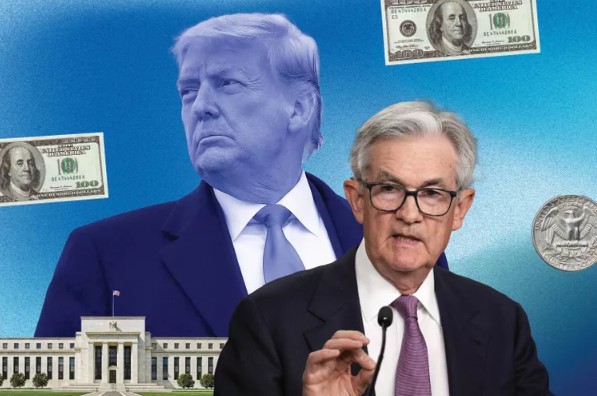Since we first issued our Outlook 2024 in January and in subsequent April and July newsletters, we have been confident in our prediction for the inevitable comeback of an equally weighted investment strategy. For almost two years now, market returns have been disproportionately led by a small group of mega-cap technology stocks, the so-called “Magnificent Seven.” The fever may have finally broken as the average stock delivered a stellar third quarter return relative to the overall market.
For the third quarter 2024, the S&P 500, Dow Jones Industrial Average and NASDAQ Composite rose 5.53%, 8.21% and 2.57% respectively. Meanwhile, the equally weighted S&P 500 climbed 8.72% in the third quarter. That the average stock as measured by the equally weighted S&P 500 outperformed the technology-heavy NASDAQ by such a wide margin bodes well for a continued broadening of market breadth as this bull market advances. Year-to-date, the S&P 500, Dow Jones Industrial Average and NASDAQ Composite are up 20.81%, 12.31% and 21.17% respectively. The equal weighted S&P 500 is now up 14.10% year-to-date.
As anticipated, the Federal Reserve cut the benchmark Fed Funds rate from a range of 5.25% to 5.5% to a lower range between 4.75% to 5%. With the previously higher range in place since July 2023, Fed Chair Powell has finally shifted the Fed’s primary focus from curbing inflation to stabilizing the labor market. The Fed’s decision to cut rates by 50 basis points, instead of the more widely expected 25 basis points, was somewhat surprising and illustrates the Fed’s “commitment to make sure that we don’t fall behind.” At his press conference following the rate cut announcement, Chair Powell used variations of the term “recalibration” no less than eight times, emphasizing this important pivot in Fed policy.
Although Powell has been reticent to claim as much, the need to recalibrate implies victory in the Fed’s hard-fought battle against inflation. Indeed, core personal consumption expenditures (PCE) rose by 0.1% in Au-gust, a deceleration from core readings of 0.2% in both June and July. Core PCE excludes volatile food and energy prices. Headline PCE rose just 0.1% in August, below consensus and cooler than July’s 0.2% rate. On an annualized basis, core and headline PCE have gained 2.7% and 2.2% respectively, a distant cry from the 7.1% PCE peak of June 2022 and within close proximity to the Fed’s 2% target. Interestingly, annualized core PCE for the last three months has been running below the Fed’s target, so disinflationary momentum seems to be building.
In turning its primary focus away from inflation to the other half of its dual mandate, the Fed is intent on pre-venting further degradation of the labor market and the much-anticipated soft economic landing is at hand. While nonfarm payroll employment increased by a respectable 142,000 jobs in August, previous months were revised lower. According to JP Morgan, the average job gain over the last three months is 116,000, well below the average 202,000 monthly job gain over the last year.
Unemployment stood at 4.2% at the end of August and the Fed expects the unemployment rate to rise to 4.4% by the end of 2024 and stabilize at that slightly higher rate throughout 2025. This will be the single most important metric to follow and any material acceleration in unemployment will usher in more aggressive rate cuts by the Fed. For now, consensus expectations are for two more 25 basis point cuts in 2024 and four 25 basis point cuts in 2025, bringing the Fed Funds rate down to 3.5% by the end of next year.
Other signs of a cooling economy, consumer spending increased by 0.2% in August, below expectations and below the 0.5% increase in July. Since consumer spending accounts for two-thirds of the US economy, this trend bears watching. In addition, the personal savings rate dropped to
4.8% in August from 5.2% in July, illustrating the need for US consumers to spend rather than save a high-er level of disposable income. De-spite these trends, the US economy is on track for steady gains in 2024 and the Fed’s median expectation calls for 2% GDP in both 2024 and 2025.
With interest rates falling and an amazing $6.8 trillion still resting in money market funds, there is considerable dry powder to support equity prices as the relative appeal of cash continues to abate. In addition, Goldman Sachs expects corporate buybacks to surpass $1 trillion for the first time in 2025. As long as the Fed is able to successfully steer the economy away from recession, we suspect that a buy-the-dip mentality will prevail.
That said, high valuations are some-what concerning, especially for the mega-cap technology cohort. As investors ratchet down the market cap ladder, bargains become more widely available. According to Yardeni Re-search, the forward PE for the Mega-Cap 8, S&P 500 LargeCap, S&P 400 MidCap and S&P 600 SmallCap is 28.8, 21.4, 15.9 and 15.6 respectively. Meanwhile, the forward PE for the S&P 500 Equal Weight Index is approximately 18.
With the stock market near record highs, the looming Presidential election may stir profit taking by traders speculating on outcome. We believe the Fed’s recalibrated attention to the US economy trumps (pun intend-ed) potential election year volatility. Regardless of who wins the White House, the odds favor continued gridlock where no single party sweeps. We intend to stay the course with our stable of world-class leading businesses that offer durable competitive advantages and provide both consistent earnings growth and predictable, persistent growth of in-come.
The opinions expressed herein are the sole views of Vantage Wealth. Supporting data and factual information used throughout is deemed to have been obtained from reliable sources.




